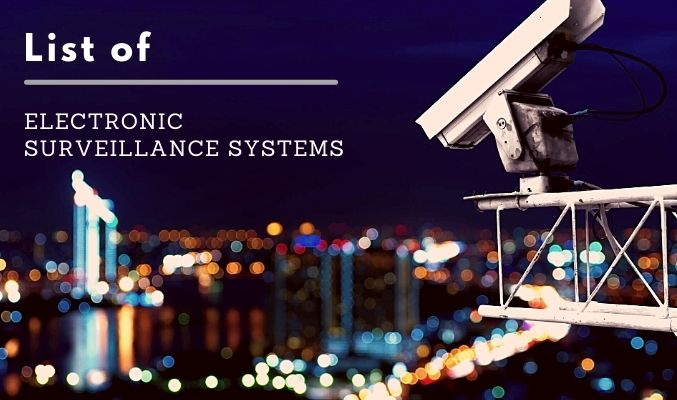

There are many different components of electronic surveillance systems. Fiber optic cable systems, infrared light barriers, capacity proximity detectors, seismic detectors, laser scanners, and video sensor technology are some of the common ones.
Recommended Read: Electronic Surveillance Systems: All You Want to Know
Here’s a list of some of the other components that make an equally important part of a robust electronic surveillance system of industrial and commercial properties:
A high-frequency transmission cable system consists of a signal transmitting cable and a signal receiving cable. The cables are similar to wire telephone lines, but they transmit signals at much higher frequencies.
The cables are connected to an alarm control panel. When the signal is interrupted by someone walking or driving over the area between the cables, the alarm panel will detect it and raise an alarm.
High-frequency transmission cable systems are perfect to detect objects (humans and vehicles) that walk, run, crawl or drive over a surface.
Pressure change sensors are designed to detect changes in the soil around them. They’re primarily used to monitor traffic, as vehicles passing over them cause a temporary increase in pressure on the ground.
These sensors are typically installed below the surface of a road. They’re positioned either between two layers of asphalt or between the asphalt and base layer of the road. A sand or gravel mixture is used to surround them and provide insulation from the extreme temperature changes above.
Asphalt is a poor conductor of heat, so these sensors don’t need to be insulated against dramatic temperature variation, but they do need protection from moisture and condensation.
The detection algorithm of PIR motion detectors is based on the monitoring and evaluation of room temperature and the infrared radiation emitted by a specific surface. This data is continuously recorded and compared to a threshold value. If these values exceed the threshold, movement will be detected and an alarm message will be sent.
PIR motion detectors are available as ceiling, wall, or corner-mounted devices, depending on the area that needs to be monitored. Some models are equipped with a lens that provides a detection range of up to 12 m, while others offer numerous lens variants.
Microwave sensors are effective in detecting small objects moving at high speed or small objects and they can be used in a wide range of applications.
Microwave sensors are applied for surveillance of long stretches in open spaces or on top of roofs. The technology used consists of an electronic radar system, which detects the smallest movements and transmits these to the alarm panel. Microwave sensors are fully weatherproof (IP).
The main advantage is that they have a large detection angle (for example 360 degrees).
The principle of radar operation is based on the measurement of distance by determining the time taken for an electromagnetic wave to travel from the transmitter to the object and back to the receiver.
Radar detectors use electromagnetic radiation. It consists of combined transmission and receiver units. The transmission unit sends out a pulse wave that reaches an object, is reflected and received by the receiver unit. The time elapsed between emission and reception of the wave is used to determine the distance of the object.
Surveillance systems are incredibly adaptable and can be used for any number of different applications. It is important to know what different types of systems there are, how they operate, and what advantages each one has. There are plenty of benefits with surveillance systems, but these can only really be highlighted once someone knows how to use them.